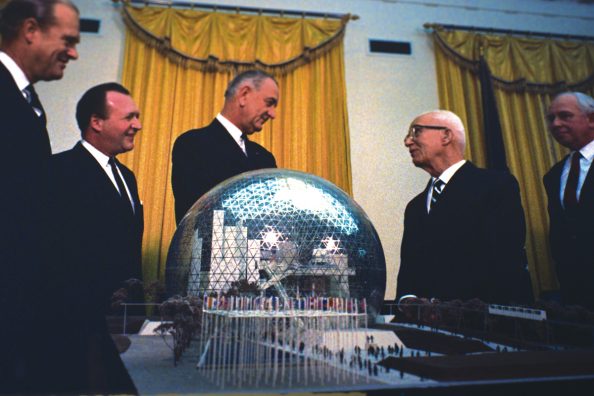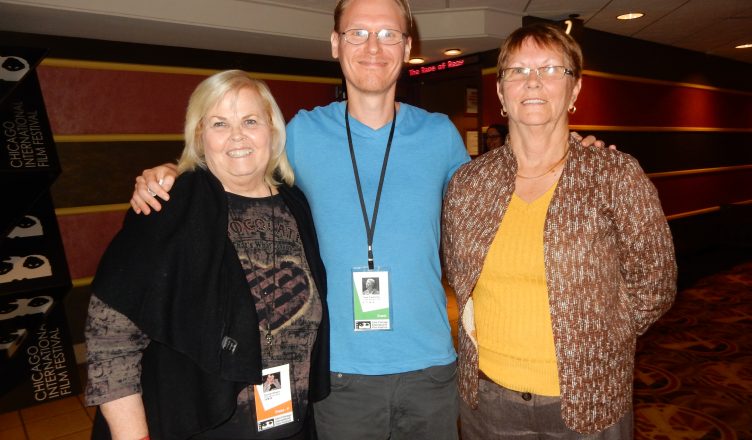The documentary The Experimental City written and directed by Chad Freidrichs (“The Pruitt-Igoe Myth) brings the fascinating true story of the MXC (Minnesota Experimental City) to the 53rd Annual Chicago International Film Festival for its World Premiere. In the 1960’s, a visionary American scientist named Dr. Athelstan Spilhaus and a team of experts set out to develop a domed metropolis that would eradicate the waste of urban living.
The planned community encountered resistance when local citizens and environmentalists rose up in protest, doubtful of the project’s utopian promise. Friedrichs, who is a graduate of the University of Missouri but was born in Minnesota, became interested in the project through a movement known as Retrofuturism. He was attracted to a comic strip about the future that ran regularly in Minnesota newspapers until Dr. Spilhaus (its creator), who was then head of the University of Minnesota’s Institute of Technology, stopped providing it to the newspaper in 1974; it ran for 16 years.
As Spilhaus explains as the film opens, “In our culture at that time, newspapers were important and one of the leading proponents of our culture.” The Publisher of the Minneapolis Star & Tribune, Otto Silha, signed on to help promote this model city of 249,565 people that would cover 55 acres. Other bright lights of the day did, as well.
Among those on the committee(s) to further explore this experiment were Hubert Humphrey (former Mayor of Minneapolis and Vice President under Lyndon Baines Johnson), Roger Revelle of Harvard, R. Buckminster Fuller (designer, futurist and originator of the geodesic dome), Dr. James C. Cain (LBJ’s doctor), Whitney Young (Director of the National Urban League) and retired United States Air Force General Schreiber.
The plan was to make a laboratory out of the city for urban technology and for technological and sociological innovation, a prototype, if you will, for new cities. Conditions were laid out for the city, including that it should be nowhere near a big city and no more than 10 miles from a major highway and, in 1967, $248,000 in federal funds was allocated for the project with a timeline of 10 years.
THE GOOD
The documentary clearly shows that, even then, the concept of working from home via computer was being considered and there were plans to help reduce the need for the entire populace to use private transportation. Instead of driving futuristic cars of the future, the highway would guide the cars. [Today, the emphasis for the future is on self-driving vehicles].
The film that Freidrichs found came to him from collecting films off the Internet (he now has a library of 10,000 of them) and by transferring them all to video in his home office. The footage included World’s Fair footage from New York City in 1964 and from Montreal in 1967. AT&T and the Bell lab also contributed much of the film footage, which helps to capture the zeitgeist of the era. Friedrichs said he worked three years for 50 hours a week, full time, to create the film, which is extremely well-done.
THE BAD
Originator of the plan, Dr. Spilhaus ultimately became disenchanted with the project, resigning from the committee in May of 1968, although he still advocated for it until as late as 1972. He later told his secretary that he wished he had made plans to build The Experimental City on the ocean floor. “If people could see things the way we did, they’d see the benefit,” said the oceanographer, scientist, engineer and meteorologist. “I thought we were gonna’ pull this off. When you’re an American in that period, you say, ‘Of course we’re gonna’ do it.” It was a period of optimism and of landing men on the moon (1969) but the times changed when LBJ took over. Ultimately, the entire project was defunded in April of 1973.
Dr. Spilhaus died in 1998, never having built an experimental city. Otto Silha of the newspaper never gave up hope and remained a proponent for 30 years, dying in 1999.
VERDICT

The film shows fascinating footage of a quirky genius who had creative visions that he convinced influential people to sign on to, but it also shows, as Friedrichs put it, “the controlling totalitarian aspect, versus the idea of displacing a lot of people who did not want to be displaced. I think it’s a very charming project of its era. There is something very endearing and optimistic about the MXC.” Ultimately, said Friedrichs, “The project got caught up in a political situation and a political time that did not support spending up to $35 billion dollars, 10 times the national debt.” Protest was the name of the game when Nixon came into office, and opponents of the project likened the project to something that Hitler would have ordered. (*Note: Eisenhower got the idea for the Interstate system from the German Autobahn system, which Hitler originated.)
When residents of the site chosen (Aitkin County, in Swatara, the poorest of the 6 sites studied) objected to the concept of an experimental city replacing their homes, the residents organized a march on the Capitol City of St. Paul in the middle of January in thirty below zero weather. They gathered 3,000 signatures on a petition stating that, “We have people in rural Minnesota who are capable of thinking for themselves and of deciding for themselves.”
Spilhaus, to his dying day, explained that, “as engineers, we see the problem and we attempt to attack it.” The problems of pollution, waste, alternative energy sources, etc., could all have been worked on under the overarching idea of an experimental city, but why so big to begin with, says one commentator in the film? And why not put it where there were no people to begin with?
This film was quite entertaining and informative. I grew up in that era, but I have to admit that I had never heard of the MCX proposed in the neighboring state of Minnesota (at one point, to laughter, a member of the committee says, “Plan B: Wisconsin.”). All the footage of the architect’s renderings for The Experimental City reminded me of every World’s Fair I’ve ever personally attended, not to mention Tomorrowland at Disneyworld.
Still, the ideas that were being discussed in the sixties seem to have died more from cultural shifts and changes (Nixon, who followed LBJ, would not fund it) than from a poor plan. Money was a problem. Politics was a problem. And the P.R. people did a horrible selling job.
Like NASA (National Aeronautics and Space Administration), which cost $20 billion dollars (in 1964 dollars) but served as a bright beacon of American “can do” spirit and technology, the enormous sums this large an undertaking would have required doomed it, as much as poor Public Relations or the residents of the intended site.
Spilhaus seemed a bit far out, but he would defend his creative ideas by saying, “If you do not make mistakes, you probably do not make anything. If you don’t know the answers, I’m brought up to say, ‘You do an experiment.’” Maybe not in rural Minnesota in the sixties on this scale, however. The director (Chad Freidrichs) shared that there are experimental cities being constructed or already in existence in the Carolinas, China, and South Korea and Google News has reported that it is a very popular idea today in Toronto.






